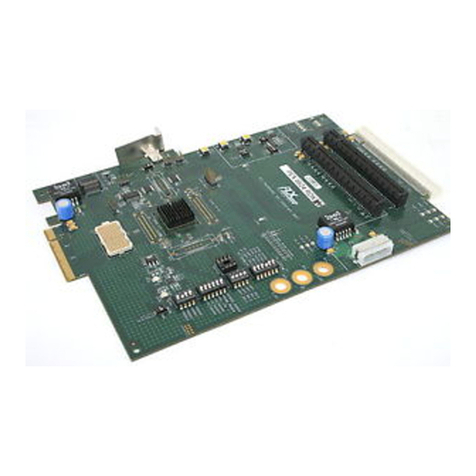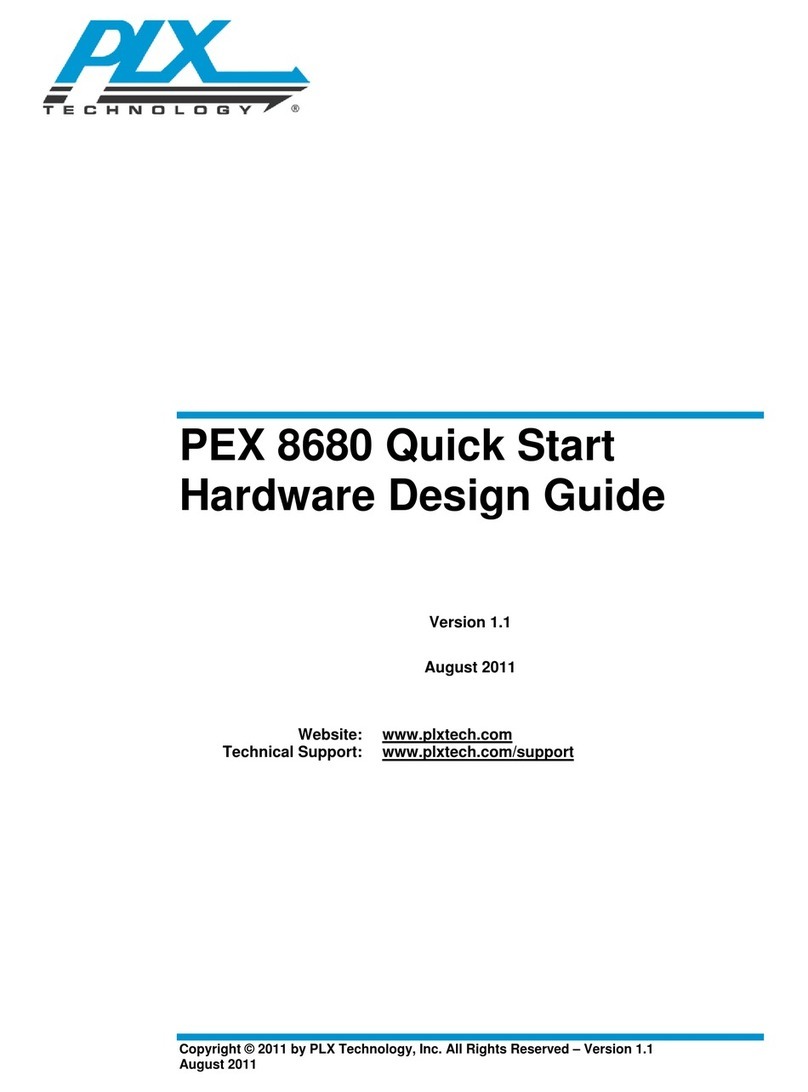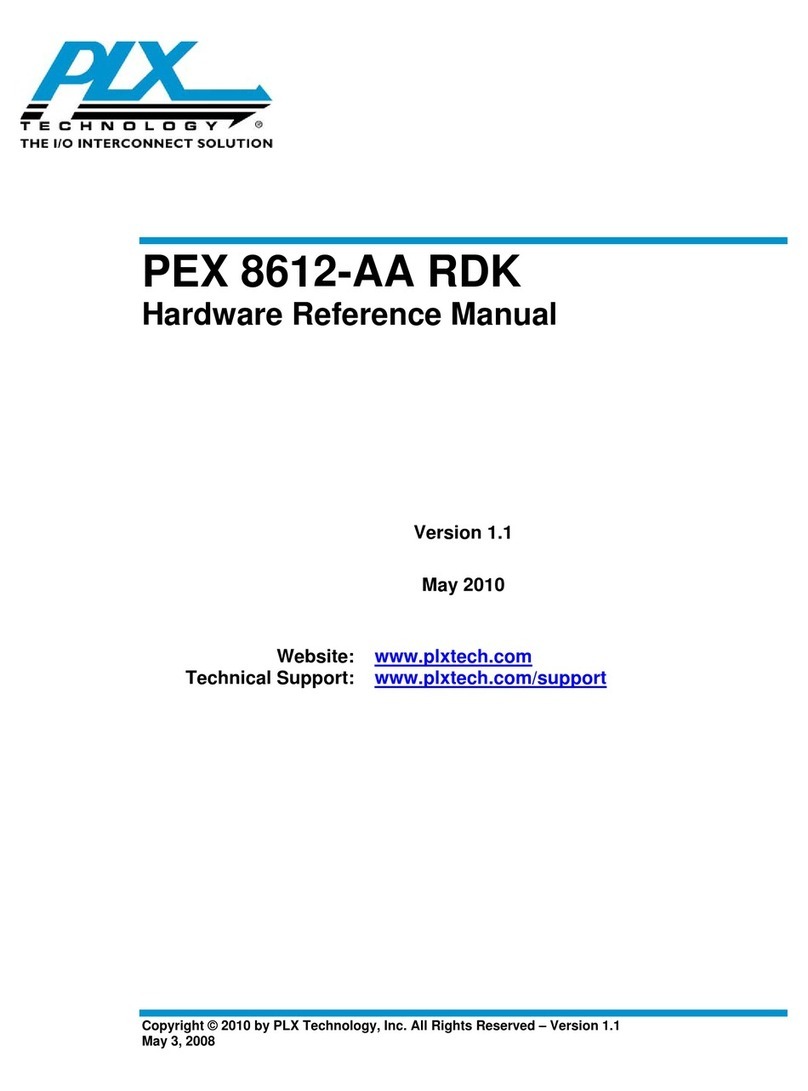
PEX 8616-AA Quick Start Hardware Design Guide, Version 1.1
© 2007 PLX Technology, Inc. All Rights Reserved. v
Contents
Preface ........................................................................................................................................................ vii
Notice ....................................................................................................................................................... vii
Revision History ....................................................................................................................................... vii
Introduction ................................................................................................................................................... 1
1Switch Interfaces.................................................................................................................................... 1
1.1 PCI Express Link Interface .............................................................................................................. 2
1.1.1 Transmitter ................................................................................................................................ 3
1.1.2 Receiver .................................................................................................................................... 5
1.1.3 Reference Clock........................................................................................................................ 6
1.1.4 Channel..................................................................................................................................... 7
1.2 NT Function ..................................................................................................................................... 8
1.3 Hot Plug Controller Interface ........................................................................................................... 9
1.4 JTAG Interface .............................................................................................................................. 11
1.5 I2C Interface ................................................................................................................................... 12
1.6 PCI Express Port Good Indicators................................................................................................. 12
1.7 Strapping Balls............................................................................................................................... 13
1.8 GPIO Balls..................................................................................................................................... 15
1.9 Power Supplies, Sequencing, and De-Coupling ........................................................................... 15
1.9.1 Power Supplies ....................................................................................................................... 15
1.9.2 Power Sequencing .................................................................................................................. 16
1.9.3 Board-Level De-Coupling........................................................................................................ 17
2PCB Layout and Layer Stackup Considerations.................................................................................. 19
2.1 BGA Routing Escape and De-Coupling Capacitor Placement...................................................... 19
2.2 Add-In Board Routing .................................................................................................................... 21
2.3 System Board Routing................................................................................................................... 22
2.4 Midbus Routing.............................................................................................................................. 22
2.5 PCB Layer Stackup Considerations .............................................................................................. 23
3References........................................................................................................................................... 24
































